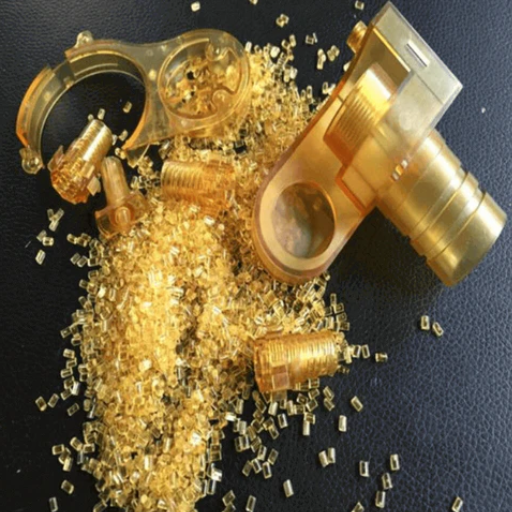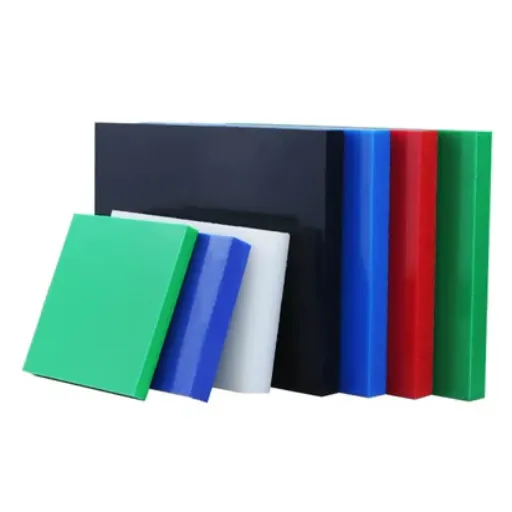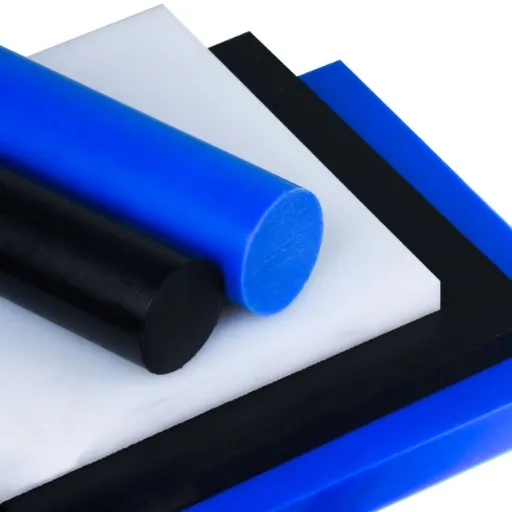Polymers, especially Polyetherimides, are revolutionizing the realm of advanced manufacturing processes with their superior versatility and performance. With their strength, heat resistance, and lightweight properties, which are traditionally considered superior, PEI polymers are rapidly gaining popularity as materials in the aerospace, automotive, and healthcare sectors. The article offers a view into the unique advantages that PEI polymers provide, elaborating on their manufacturing efficiencies, their support for design innovations, and the challenges that high-performance applications present. These advantages create new possibilities for manufacturers to produce durable, efficient, and innovative product ideas. Read on to unearth how PEI polymers are shaping the future of the manufacturing world.
Introduction to PEI and Its Significance in Manufacturing
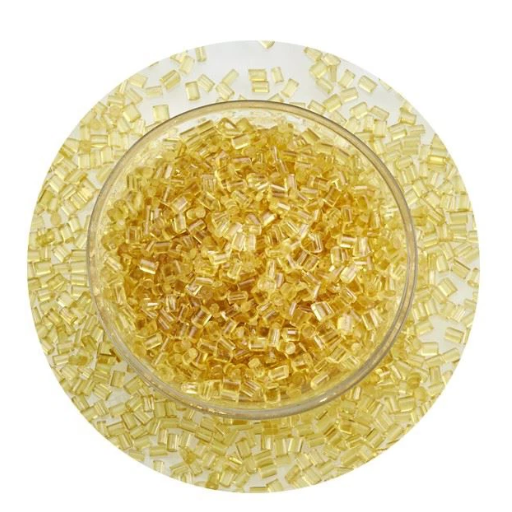
What Is Polyetherimide (PEI)?
Polyetherimide (PEI) is regarded as a high-performance engineering thermoplastic, possessing exceptional thermal, mechanical, and chemical properties. It was introduced as a high-performance polymer with a highly versatile nature, making it useful in various engineering applications. It features an amorphous structure that enables very high strength and stiffness, even at high temperature levels. The high glass transition temperature of PEI is approximately 217°C (422°F), making it suitable for applications where heat resistance is essential. Other characteristics include dimensional stability, flame resistance without the need for additives, and excellent dielectric properties; thus, PEI is considered suitable for use in the aerospace, automotive, electronics, and healthcare industries.
The prime attribute that makes PEI stand out is its resistance to harsh chemical environments; it does not degrade with exposure to solvents and attack by acids and hydrocarbons. The processing of PEI is also beyond reproach; it is compatible with various methods, including injection molding, extrusion, additive manufacturing, and 3D printing. To illustrate this, PEI is primarily used as a build surface or as a filament for components that require durability and heat resistance.
PEI is the ideal option for lightweight yet strong industrial-grade components that must meet stringent regulatory and environmental standards. From medical device housings to aircraft interiors, the use of PEI is continuing to increase as manufacturers seek to improve product performance and reliability while optimizing production efficiency.
Overview of Polymer Use in Advanced Manufacturing
Polymers have become a revolutionary concept in modern Advanced Manufacturing, providing the marketplace with unmatched versatility and properties to satisfy the diverse needs of various industries. Due to their lightweight nature and high strength-to-weight ratios, these materials find applications in the automotive, aerospace, and electronics industries. Polymers such as PEEK (polyether ether ketone) and PEI (polyetherimide) exhibit unique thermal and chemical resistance, which sustains their durability and performance even in harsh environments. Additionally, these materials offer design flexibility, allowing manufacturers to fabricate complex geometries with precision.
Recent developments in polymer science have also promoted recycling and sustainability, aligning with the global agenda for reducing environmental footprints. Thermoplastics, for example, are highly regarded because of their ability to be reheated and reshaped, thereby generating less waste and promoting circular economies. With polymer integration in additive manufacturing, such as 3D printing, the potential is increased even further, allowing for rapid prototyping and customization while minimizing waste material levels. These advancements keep polymers at the forefront as the crown jewel of innovation, helping industries meet stringent performance specifications while optimizing costs and taking on environmental responsibilities.
The Role of PEI in Modern Industries
Polyetherimide (PEI) is categorized as a high-performance thermoplastic polymer that has established a strong presence in the industry, owing to its exceptional thermal and mechanical properties. PEI has carved out a reputation for an outstanding strength-to-weight ratio, finding applications in aerospace, automotive, and electronics. With its high resistance to heat, the polymer performs well in temperatures above 200°C and is therefore suitable for use in critical components such as insulators, connectors, and structural parts in aircraft and vehicular applications.
In addition to the above, PEI also exhibits excellent resistance to chemicals, including a variety of solvents and aggressive substances, without undergoing any degradation. Such resistance proves quite valuable for industrial manufacturing, particularly in intensive chemical processes. The material is therefore considered flame-retardant and has low smoke emission, providing added safety advantages.
The growing trends in the market indicate further spread of PEI into the healthcare industry. This is because it can support biocompatibility and sterility within the manufacture of medical devices, such as surgical instruments and dental equipment. Subsequently, PEI’s versatility in additive manufacturing, such as 3D printing, offers reduced development time and cost for the rapid prototyping of various industries.
Thus, the integration of PEI in modern industries has made this product a catalyst for innovation, while ensuring reliability and efficiency alongside trends that demand sustainability and performance improvement.
Key Properties of PEI
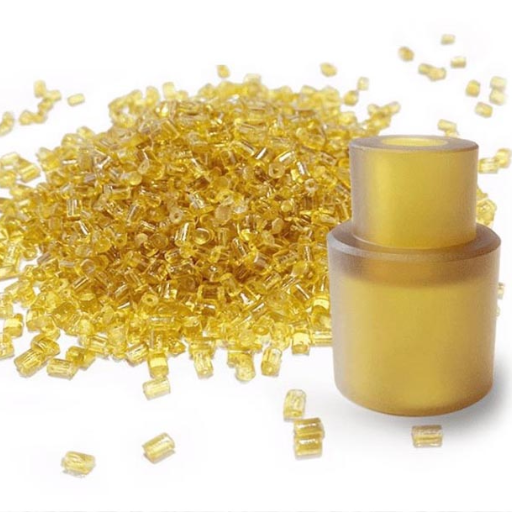
Thermal Stability and Mechanical Strength
Polyetherimide is one of the polymers that showcases excellent thermal stability and retains mechanical properties over a wide temperature range. It can withstand continuous use at elevated temperatures up to approximately 340°F (170°C) without experiencing any considerable degradation. The high glass transition temperature (~420°F or 216°C) is a testament to its excellent thermal performance and resistance to thermal deformation, making it attractive for use in high-end applications, such as aerospace and automotive components, that are exposed to extreme weather conditions.
Furthermore, in addition to providing excellent mechanical strength, with tensile strengths usually exceeding 15,000 psi (103 MPa), it resists wear and tear under operational stresses due to such heavy loads. These heavy-duty mechanical properties, combined with high-temperature resistance, provide PEI with reliability under high-performance applications such as structural members, high-tech electronics, and medical devices. This also affords manufacturers an assured material that meets the precision and consistency required in environments demanding long-term stability and peak performance.
Chemical Resistance of PEI
Polyetherimide (PEI) is a material with outstanding resistance to chemicals. This offers it an edge in environments that are harsh on chemicals. This high-performance thermoplastic withstands degradation well in the presence of hydrocarbons, alcohols, and industrial aqueous solutions, which are sometimes classified as biodegradable industrial wastes. The material is also readily resistant to weak acids and bases, ensuring its suitability for use in processing equipment, laboratory instruments, or industrial machinery where a protective layer can be compromised.
The chemically resistant PEI prolongs the life of sterilization operations, such as autoclaving and chemical disinfectant treatments, without loss of mechanical properties or dimensions. This makes it an ideal candidate for medical equipment and healthcare applications where sterilisation is required. Furthermore, due to its low absorption of organic solvents, the risk of swelling or deformation is reduced, improving its dimensional stability. Such chemical resistance lowers maintenance requirements and ensures the product performs reliably over time in chemically aggressive environments. In a way, versatility and durability make PEI one of the most essential materials for industries that require chemical resistance coupled with long-term reliability.
Electrical Properties and Insulation Capabilities
PEI exhibits exceptional electrical properties and is considered an ideal candidate for any application requiring insulation durability and operational stability. It offers a very high potential dielectric strength that insulates electric current passing through it even under very high voltages, thus eliminating the potential for faulty electrical conduction. Its low dissipation factor, along with stable dielectric parameters observed over a reasonably high frequency range, contributes to maintaining the material’s electrical integrity unaffected by external dynamic factors.
Furthermore, due to its resistance to high temperatures, the elevated temperature conditions will not affect the electrical parameters, providing end-users with complete confidence in using it within electronic materials, connectors, and electrical insulations intended for industrial purposes. Advanced testing further indicated that the material can maintain consistent insulation performance in environmental operating conditions over 200°C. These properties assure its position among the top-grade candidate materials for new-age electrical and electronic applications where safety and efficiency are the most crucial parameters.
Benefits of Using PEI in Production
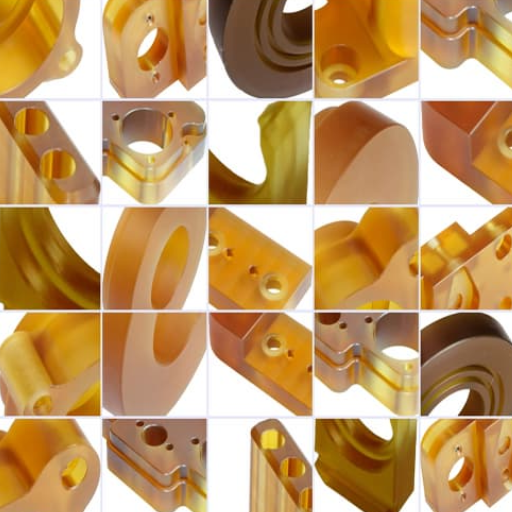
Advantages of PEI in Injection Molding
Polyetherimide offers numerous advantages during the injection molding process and is consequently a highly sought-after material for manufacturing high-performance parts. Excellent thermal stability enables molded components to be exposed to very high temperatures, typically above 200°C, for extended periods while retaining their structural integrity. Consequently, PEI finds applications in industries that utilize heat-resistant materials, such as aerospace, automotive, and electronics.
The material’s very high mechanical strength and dimensional stability further enhance its usefulness in precision molding. PEI resists warping and deformation; thus, complex and intricate designs can be produced with impenetrable accuracy. The material’s flame-retardant nature helps meet stringent safety standards, thereby reducing the cost of flame-proofing treatments or the application of flame retardants.
In the production of more cost-efficient protection, the outwear of PEI materials against chemical substances increases operational lifecycle, reducing the cost of maintenance and replacements, especially in essential applications. It even allows for lightweighting—namely, the high ratio of strength to weight ensures that lighter parts are manufactured without compromising performance. It is a highly versatile material, as it can be employed with various alternative processing techniques, including multi-shot molding or inserts, for progressive and efficient production.
The beneficial features of PEI can be further leveraged in several industry applications, thereby enabling manufacturing firms to increase reliability, promote safety, and enhance the functional performance of high-precision parts.
Cost-effectiveness and Durability of PEI Parts
Polyetherimide (PEI) stands out as a cost-effective solution for manufacturers seeking a balance between performance and expenditure. Due to the inherent durability of the polymer particles, which means that parts prepared from it can withstand long working or usage hours in a harsh environment without regular replacements, resulting in long-term savings. PEI parts also exhibit unusual chemical resistance and temperature stability, thereby reducing the possibility of degradation and the cost of maintenance over time.
In comparison to other materials, PEI has a high strength-to-weight ratio, which not only decreases the consumption of raw materials but also enhances the performance of the given applications, likely in the automotive or aerospace sectors. Another feature of the polymer that draws manufacturers is its capacity to be recycled, placing it in an appealing position for those manufacturers who want to optimize production with some environmental standards. Thus, the coalescence of durability and performance reliability, together with being cost-efficient, makes PEI a sure option for precision components in those industries that require an economical yet robust product.
Environment and Sustainability Issues
Polyetherimide (PEI) is a material highly rated for its sustainability due to its properties and impact on environmental industries. PEI’s exceptional durability and high thermal resistance enable longer lifespans for products, basically minimizing the need for frequent replacements. The long lifespan of the production lowers material consumption and industrial waste, contributing to increased sustainability in the production cycle.
From an environmental perspective, recycling PEI is considered a good practice, as it enables manufacturers to recover the material and reuse it without compromising its quality. This means that by introducing the use of PEI in their manufacturing procedures, industries reduce their reliance on virgin resources, thus lowering the carbon footprint associated with production. The material also leads to increased energy efficiency in related fields, such as transportation, considering that lightweight components made from PEI translate to reduced fuel consumption and lower greenhouse gas emissions during use.
Notably, the adoption of PEI presents the industry with the opportunity to align itself with increasingly stringent green legislation and market trends, thereby taking advantage of mounting consumer and participatory pressure to uphold environmentally conscious practices. Organizations can utilize PEI to provide a green solution without compromising on performance or price, thereby giving concerned parties an edge in establishing a sustainable presence.
Applications of PEI in Different Sectors
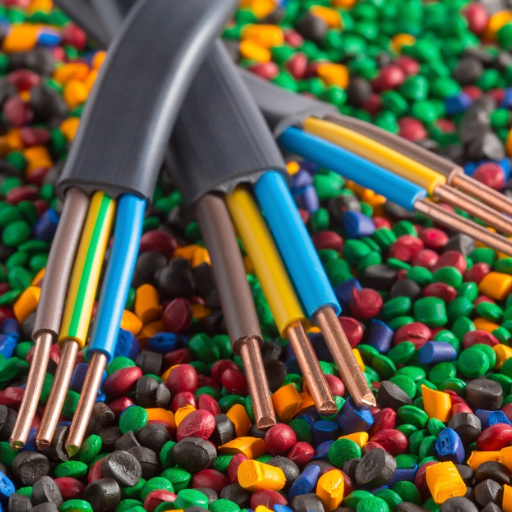
PEI in Medical Device Manufacturing
Polyetherimide (PEI) is the ultimate thermoplastic, offering versatility and outstanding properties that make it essential for vital applications in medical device manufacturing. It would be tough to produce durable and reliable medical components with high mechanical strength, thermal stability, and inherent biocompatibility. Therefore, PEI is highly applied in fabricating surgical instruments, sterilization trays, and implantable devices, while the utmost precision and safety are of concern.
This remarkable feature of PEI in the industry is its resistance to harsh sterilization methods such as autoclaving, gamma radiation, and ethylene oxide without compromising its performance or structure. Such endurance ensures that hygienic tools remain available for a long period, thereby playing a direct role in infection control within the healthcare environment. Furthermore, chemical and wear resistance render it almost fit for harsh medical applications.
Therefore, PEI is being increasingly utilized in novel processes that include surgical instrument handles, ergonomic design, or diagnostic equipment parts requiring exceptional transparency. It is lightweight, which economizes on the weight of other medical devices, thereby improving the ease for medical practitioners. PI provides medical technologies that meet stringent health standards, combining exquisite features to ensure patient comfort and operational efficiency.
With the Use of PEI in Automotive Components
Due to the combination of superior heat resistance, mechanical strength, and dimensional stability, it has been a sought-after automotive material. The kind of parts made from PEI by automakers must stand harsh environments where high temperatures and chemical exposures are expected. Electrical connectors, under-the-hood components comprising housing and sockets, and parts of the lighting system are some specific applications. PEI’s capacity to withstand long-term thermal and mechanical stresses ensures durability, aiding in excellent maintenance and thereby improving the overall performance of the vehicle.
Considerable weight reduction through PEI is an added advantage to automotive design efforts aimed at ensuring fuel economy, as this aspect supports the entire industry on its path to sustainability and lower emission standards. The reinforced flame retarding properties of PEI application allow vehicles to be compliant with stringent industrial fire safety standards. PEI, being adaptable to molding processes, allows for intricate designs while maintaining structural integrity, which is a blessing for innovative, well-performing automotive applications.
PEI, in Cell Culture and Biotechnological Applications
Polyetherimide (PEI) has established itself as a tool of choice in cell culture and various biotechnological applications due to its chemical versatility and mechanical strength. Arguably, its most favored pharmaceutical use is in transfection protocols where PEI serves as a transfection agent to deliver genetic material into target cells. Due to the presence of positively charged amine groups in PEI, charge-charge interactions occur between PEI and negatively charged DNA or RNA molecules, which results in the formation of complexes that are taken up by cells. The method offers an excellent transfection efficiency for diverse cell types and is therefore widely accepted in research and pharmaceutical industries.
PEI scaffolds are widely used in tissue engineering applications, as their biocompatibility facilitates the three-dimensional culturing of cells, leading to the development of realistic tissue models and regenerative outcomes. Further advances underscore the use of PEI in immobilizing enzymes for industrial bioprocessing. Binding enzymes to PEI matrices enhances enzymatic activity and stability, thereby increasing the efficiency and decreasing the cost of processes, such as biofuel production and pharmaceutical synthesis.
Studies have even revealed that PEI coating on substrates enhances cellular adhesion and proliferation, opening new frontiers in advanced biotechnological research. The unique properties of PEI provide impetus for advances in medical research, pharmaceutical production, and industrial biotechnology, paving the way for more sustainable, efficient, and cutting-edge solutions.
Exploring PEI Rods and Stock Shapes
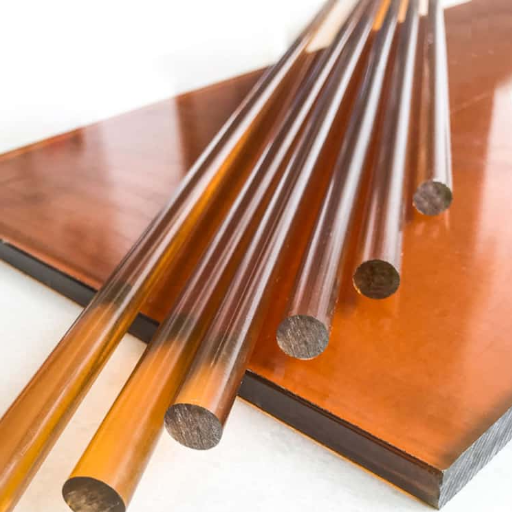
Characteristics of PEI Rods
As far as some of the characteristic traits of PEI rods are concerned, a host of essential features that make this material more adaptable to varied applications immediately come to mind. First and foremost, PEI rods have excellent thermal stability. Withstands sustained exposure to high temperatures, often exceeding 200°C, and retains its properties without significant decomposition, making PEI rods an ideal choice for use in highly demanding environments such as aerospace, automotive, and electronics manufacturing industries. This heat resistance also ensures a reasonable degree of dimensional stability, retaining the properties of these rods under mechanical stress or varying temperatures.
The other important feature is their high mechanical strength. The rods have an excellent balance of rigidity and toughness, and can be subjected to relatively heavy loading, but are also prone to wear over time. They also possess fire-retardant properties and low outgassing characteristics, which are precisely what one would require from materials destined for such high-grade, safety- and cleanliness-oriented applications, especially in the medical, semiconductor, and aviation industries.
I would like to conclude by mentioning chemical resistance and biocompatibility. They are resistant to a wide array of chemicals, including acids, solvents, and hydrocarbons, thus providing a wider arena for use in highly corrosive environments. On the other hand, biocompatibility supports their utilization in healthcare and biotechnology, where materials are required to interact safely with biological systems. With all these features combined, I would consider PEI rods the solution for advanced industries posing innovative challenges.
Customization and Fabrication of PEI Stock Shapes
The process of customizing and fabricating PEI stock shapes is completed with precision and adaptability for specific applications of interest. PEI stock shapes can be further machined into various configurations, providing designers and engineers with more flexibility to create tailored solutions to meet their specific needs. Whether shaping parts for intricate aerospace systems or manufacturing medical-grade components, PEI is a preferred material for precision fabrication due to its exceptional durability and machinability. Advanced machining techniques, such as CNC milling and CNC turning, enable the fabrication of intricate and high-tolerance components, ensuring that the final products adhere to the design specifications.
I also pay attention to choosing fabrication methods that are most appropriate for the application requirements so that the end-use can be optimized. These fabrication methods may include thermoforming, cutting, and bonding to enhance the functionality of the parts. PEI stock shapes can be improved through surface treatments to resist wear or meet other requirements, such as appearance. Close cooperation with my clients enables a well-balanced approach to each custom solution, taking into account performance, cost-effectiveness, and longevity. In line with the application of PEI’s versatile properties and industry-best methods and practices, I can guarantee that each fabricated part will surpass expectations, even under the most challenging of conditions.
Industry Use Cases for PEI Rods
PEI rods have gained importance in various industries due to their exceptional thermal stability, mechanical strength, and chemical resistance. For example, in the aerospace and automotive sectors, PEI is used to fabricate lightweight yet strong components that reduce the overall system’s weight without compromising integrity. Considering its tolerance to high temperatures, I have helped many clients develop components, such as electrical housings and insulators, that resist extreme conditions and perform reliably even in highly demanding applications, such as the engine compartment or turbine assembly.
Another industry where PEI rods have numerous beneficial applications is the medical field. Due to the high chemical resistance and biocompatibility of PEI material, it has gained massive popularity in the industry for manufacturing medical instruments, sterilizable trays, and components of diagnostic devices. I have also worked closely with my medical clients in the development of custom PEI-based solutions for applications requiring repeated sterilization, ensuring durability while meeting stringent regulations for medical instruments.
PEI rods also find excellent application in the electronics industry, where their high insulation value is utilized in fabricating connectors, circuit boards, and other high-grade electronic components. I have also been involved in assisting clients in optimizing designs for electrical performance, cost-efficiency, and reliability. Across all these industries, PEI rods consistently demonstrate their versatility, ensuring the delivery of innovative and reliable solutions to address specific functional problems.
Reference Sources
-
Polyetherimide for High-Performance Applications – Ensinger
Discusses the unique thermal, mechanical, and chemical properties of PEI and its applications. -
Exploring Polyetherimide (PEI) – The No Fuss Polymer – Polyfluoro Ltd
Highlights PEI’s high-performance characteristics and its value in demanding industries. -
Polyetherimide (PEI) – Drake Plastics
Explores PEI’s chemical resistance and its advantages over other thermoplastics. -
Advantages of PEI in CNC Machining – AT Machining
Focuses on PEI’s flame resistance, low smoke production, and suitability for high-risk industries. -
Polyethylenimine (PEI) in Gene Therapy – ScienceDirect
Examines PEI’s role in polymer-based gene delivery and its derivatives in research. - View PC Plastic Pellets Manufacturers in China
Frequently Asked Questions (FAQs)
What are the advantages of PEI polymers?
There are several key benefits associated with PEI polymers, including excellent thermal stability, high mechanical properties, and resistance to various chemicals. PEI has seen use in everything from aerospace to automotive to electronics for this reason. PEI also exhibits flame retardance and low smoke emission, making it suitable for safety-critical environments. Its capability to maintain performance across a wide temperature range further contributes to its attractiveness for demanding applications. Its excellent dimensional stability further contributes to its reliability in complex assemblies.
How does PEI go against other polymers?
PEI differs from other polymers, such as PEEK or polycarbonate, by giving a better resistance to thermal and chemical attacks. Although PEEK offers excellent mechanical strength, PEI is often less costly and simpler to process. Polycarbonate, theorized to offer high impact resistance, does not possess high thermal properties. Thus, the PEI tends to be most viable in applications where the high-performance materials are subject to extreme conditions. Moreover, from a fabrication standpoint, PEI offers processing advantages that range from extrusion to compression molding to injection molding.
What industries capitalize on PEI polymers?
Aerospace, automotive, electronics, and medical device industries are the most substantial beneficiaries of applying PEI polymers. By aerospace standards, PEI contributes to the lightweight development and heat resistance of parts, thereby achieving fuel saving and safety. In the automotive industry, it is used in PEI applications for parts that require the properties of toughness and thermal stability, such as connectors and housings. Its electrical insulating capacity in electronics constitutes the majority of PEI usage for circuit boards and other electronic components. In addition to being medical-grade and biocompatible, PEI is sterilizable, making it ideal for use in surgical instruments and implants.
Can PEI polymers be recycled?
PEI polymers are not, in a manner of speaking, recyclable since they are thermosetting plastics, meaning they do not melt and reflow like thermoplastics, which erodes the recycling process. However, methods for recycling thermosetting plastics and chemical processes that might recover valuable materials are currently under investigation. Producers are, therefore, making an effort to adopt sustainable techniques aimed at reducing landfill waste during PEI production, while traditional recycling methods do not significantly help with the issue. Additionally, companies are developing bio-based or biodegradable alternatives to conventional PEI compositions, aiming to improve sustainability.
What are the manufacturing processes in which PEI is commonly applied?
PEI is commonly used in the manufacturing of automotive components, electrical connectors, and aircraft components, with very high performance requirements. From high-temperature resistance, it extends to engine components and turbine parts, for which the quality of operation is crucial. PEI is often found in insulating materials and circuit boards in the electronics world. Other applications include medical devices and the components of industrial machinery, where strength and durability are required. The use of PEI is widespread across various manufacturing processes, including injection molding and 3D printing.
How does PEI enhance material performance under high-temperature conditions?
PEI enhances the performance of materials in high-temperature applications due to its exceptional thermal stability and retention of high mechanical strength. The service temperature can reach up to 200±1°C, at which point the PEI would exhibit performance degradation of less than 5 percent. This is closely aligned with the numerous applications in the aerospace and automotive industries, where materials are subjected to extreme heat exposure. Additionally, the extremely low creep of PEI endows the material with the capacity to remain dimensionally stable under wear and temperature. It also provides another dimension to ensuring the deformation resistance of the components used in high-temperature environments, which is another aspect of its reliability; hence, this material remains the most preferred.

